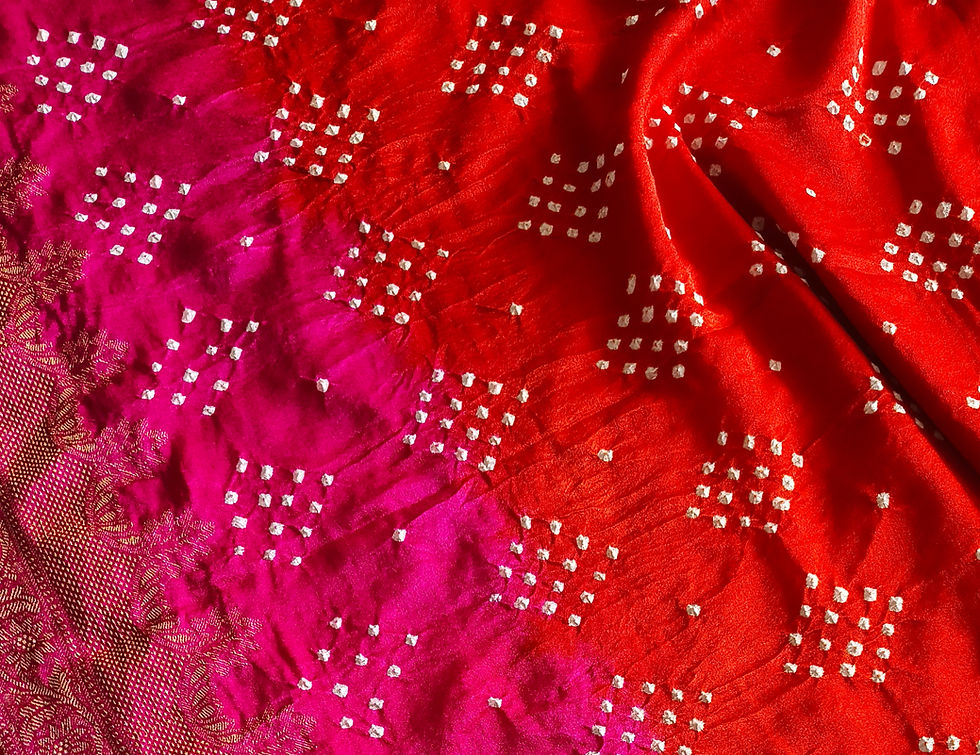Handmade bandhani saree: An Ancient Technique of Indian Heritage
- dhupchaanv
- Dec 24, 2024
- 2 min read
Updated: Jan 1
Bandhej, also known as Bandhani , is a traditional Indian tie-dye technique that has been practiced for centuries. This ancient art form is renowned for its intricate patterns and vibrant colors, embodying the rich cultural heritage of India.
The origins of Bandhej can be traced back to the Indus Valley Civilization, where similar dyeing techniques were used. Over the years, it has evolved and spread across various regions of India, with each area developing its unique style and patterns.
The Bandhej technique involves tying small portions of fabric with thread to create intricate patterns before dyeing. The areas tied with thread resist the dye, resulting in beautiful designs. The process typically includes the following steps:
Preparation: The fabric is washed and prepared for dyeing.
Tying: Small sections of the fabric are tied tightly with thread to form patterns.
Dyeing: The tied fabric is then dyed using natural or synthetic dyes.
Unraveling: After dyeing, the threads are removed to reveal the stunning patterns.
Bandhej holds a significant place in Indian culture, often used in traditional attire such as bandhani saree, turbans, and dress materials. It is especially popular in states like Rajasthan and Gujarat, where it is associated with various festivals and ceremonies.
In contemporary fashion, Bandhej has seen a resurgence, with designers incorporating this ancient technique into modern clothing and accessories. The blend of traditional craftsmanship with modern aesthetics continues to keep this heritage alive.
Handmade Bandhej is more than just a dyeing technique; it is a testament to India's rich cultural heritage and artistic expression. By appreciating and promoting this ancient art form, we ensure that it continues to thrive for future generations.
Explore our collection Now!


Comments